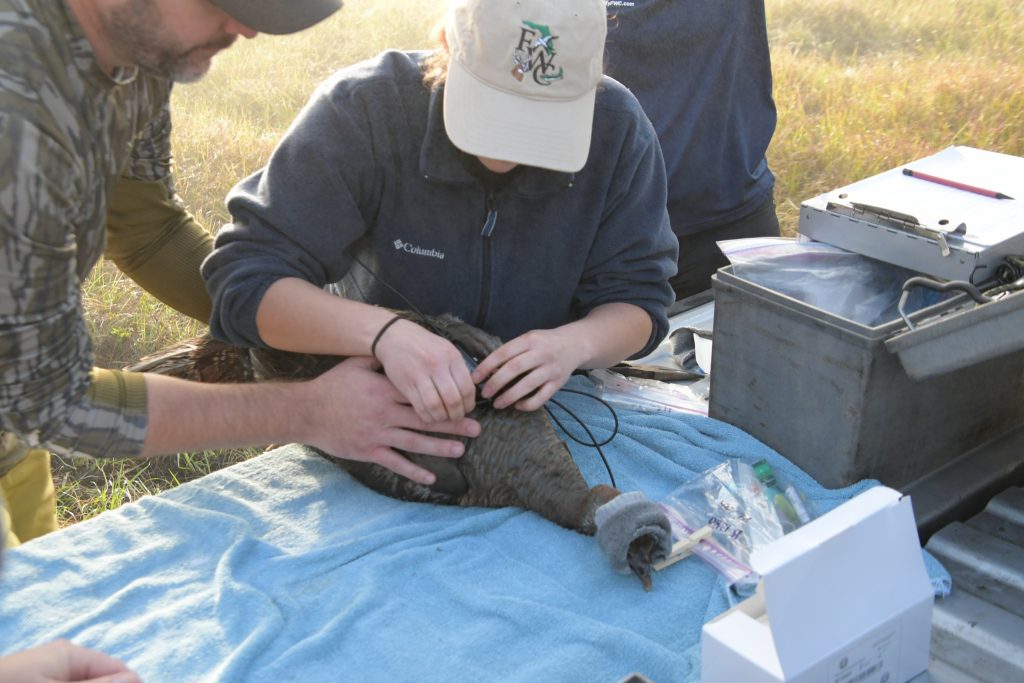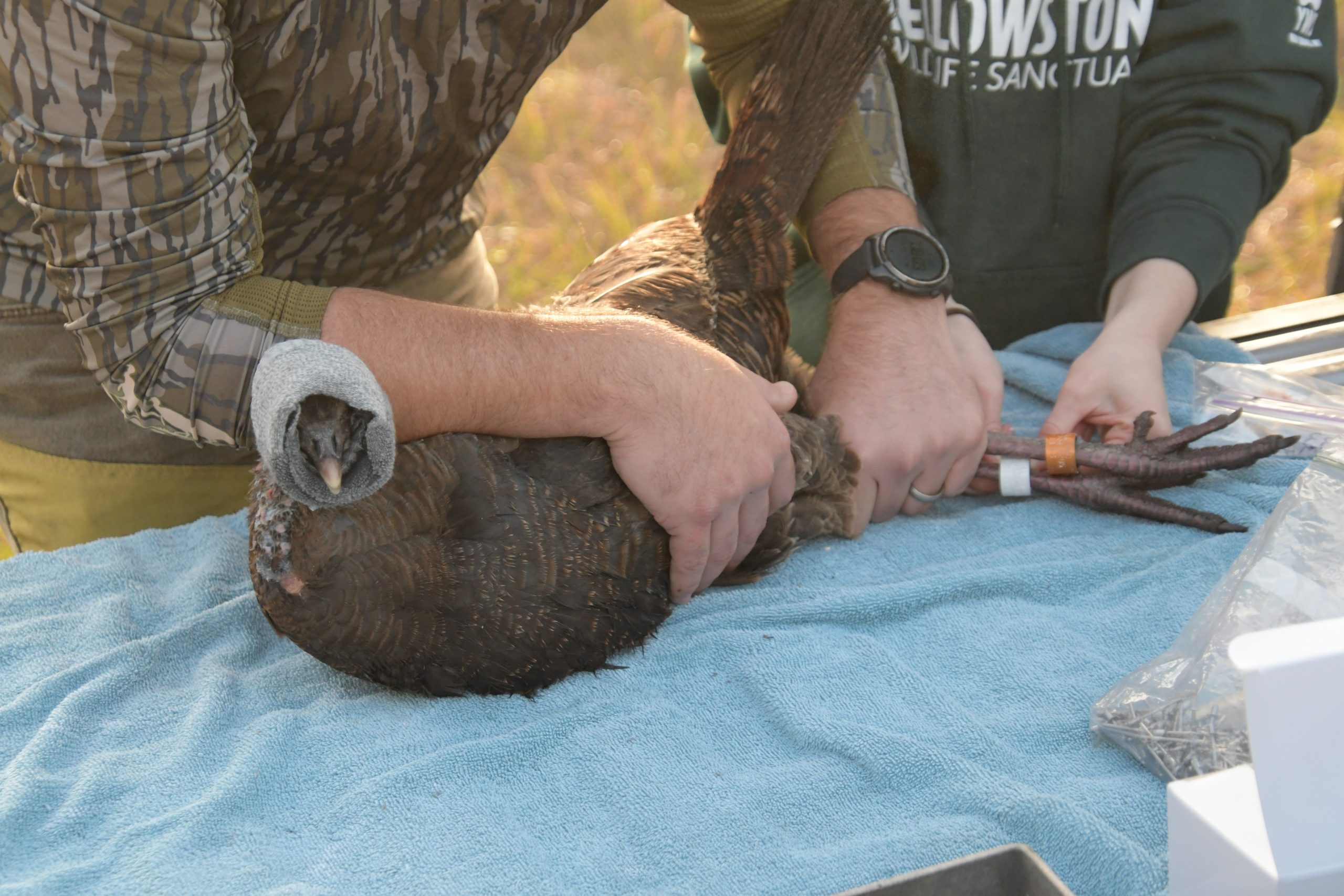Florida Research Sheds Light on Osceola Wild Turkey Reproduction and Survival
To enhance the success of wild turkey nests and the survival of their young, it is crucial to understand the survival of hens, their choices in habitat selection, nesting chronology and nest site selection. These factors play a pivotal role in developing effective habitat management practices and help increase wild turkey nest success and poult survival.
To address these critical aspects, research is underway in Florida to assess survival rates of Osceola wild turkeys, including both adult birds and their poults, while closely examining the factors that are linked to their mortality.
The research project aims to quantify hens’ survival and habitat selection patterns, as researchers seek to quantify nesting chronology, nest site selection, and the influence of vegetation on nesting success. Additionally, the project aims to determine the prevalence of LPDV (Lymphoproliferative disease virus) and REV (Reticuloendotheliosis virus) in adult hens and understand its impact on the Osceola wild turkey population.
Researchers will also focus on quantifying the survival and behavior of adult male wild turkeys in hunted populations. They will assess gobbling chronology in both hunted and unhunted populations across the range of the Osceola subspecies in south and central Florida. By studying these aspects, researchers aim to gain insights into the impacts of harvest management strategies and season structure on wild turkey populations.
The research project commenced in 2022 through a collaboration between the University of Florida, the Florida Fish and Wildlife Conservation Commission and the Florida NWTF State Chapter. The first season involved capturing a total of 40 hens and three adult gobblers on the Okaloacoochee Wildlife Management Area and Deluca Preserve.

To facilitate the monitoring of their movements, the captured birds were fitted with backpack-style harnesses that included Global Positioning System tags equipped with Very High Frequency transmitters. Researchers also collected blood samples and swabs for disease surveillance, and turkeys were weighed, sexed, aged, measured, and uniquely banded for identification.



To gather further data, the research project deployed a network of 190 Automated Sound Recording Units across eight study sites. These ARUs were strategically placed in both hunted and unhunted areas to capture the gobbling sounds of Osceola wild turkeys.
“The purpose of the ARUs is to determine how hunting affects gobbling chronology in the early and late hunting season regions,” said Marcus Lashley, Ph.D., University of Florida associate professor.”
By analyzing gobbling activity, researchers want to better understand the impact of hunting on the behavior of Osceola wild turkeys. Analysis results will provide valuable insights to inform and guide future hunting practices and conservation efforts.
To expand the project's scope and gather more comprehensive data, the NWTF has supplied funds to support additional GPS tags to increase hen sample sizes on two hunted areas, add ARUs to increase sampling intensity across five hunted and five unhunted sites, and provide salary to support additional staff to deploy equipment, monitor marked birds, and collect and process data.
This research will span four years, continuing throughout 2023-25. During this time, the project will continue its efforts by deploying additional GPS and VHF tags on hens and gobblers to gather more data and refine the understanding of these birds.

After their capture, the turkeys will be released, and researchers will conduct weekly mortality checks on tagged birds until mid-February of each year. GPS transmitters are then programmed to record locations, enabling the monitoring of hens and their nesting behavior. A two-pronged Ultra High Frequency antenna and modem facilitate the remote downloading of GPS data weekly during the nesting season.
General gobbling activity is monitored from early February to mid-May using ARUs strategically placed throughout the study area. These devices capture Osceola wild turkey vocalizations, providing valuable data from the birds’ behavior. By analyzing the recorded calls using specialized software, researchers can understand how habitat structure, landscape variables and hunting can influence gobbling activity.
“These data are critical to inform management decisions regarding the sustainable management of the Osceola subspecies,” Lashley said. “This is particularly important because the subspecies range is restricted to peninsular Florida, and hunting pressure is high due to hunters seeking a turkey slam.”
This project is one of 10 new research projects across nine states the NWTF is funding, with $582,374 invested among these vital projects. These research projects are part of a nearly $9 million investment into wild turkey research in 2023, supported by the NWTF and its partners.
